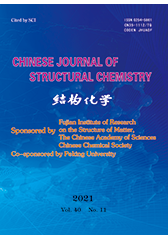Pendant Group Effect of Polymeric Dielectrics on the Performance of Organic Thin Film Transistors
HUANG Chong-Yu, FENG Shi-Yu and HUANG Wei-Guo*
Chin. J. Struct. Chem. 2021, 40, 1541-1549 DOI: 10.14102/j.cnki.0254-5861.2011-3167
December 15, 2021
polymer dielectric, organic thin film transistor, hydrogen bonding, π-electron delocalization, noncovalent interaction
ABSTRACT
Polymer dielectric is superior to its inorganic
counterparts due to not only the low cost and intrinsic flexibility, but also
the readily tunable dielectric constant, surface charge trap density, charge
ejection and releasing ability and dipole moment, and all these properties play
decisive roles in regulating the characteristic and performances of organic
thin film transistors (OTFT). However, systematical studies on the relationship
between structure and properties of polymeric dielectrics are rare. To this
end, a series of polymeric dielectrics with well-defined linkages (ester or
amide bonds) and predesigned pendant groups (alkyl- and aromatic-groups) are
synthesized in high yields. Detailed studies show that the polyamide
dielectrics exhibit higher dielectric constant, surface charge trapping
density, and better charge storage capability than corresponding polyester
dielectrics. Further, increasing the π electron
delocalization of the pendant groups generally benefits the charge storage
property and transistor memory behavior. Theoretical calculation reveals that
the hydrogen bonding between the linkage groups and the energy alignment
between polymeric dielectric and semiconductor are responsible for the observed
performance differences of OTFT with different polymeric dielectrics. These
results may shine light on the design of polymeric dielectrics for OTFTs with
different applications.








